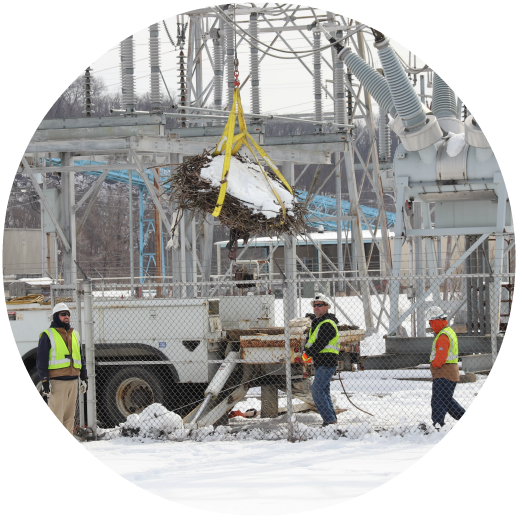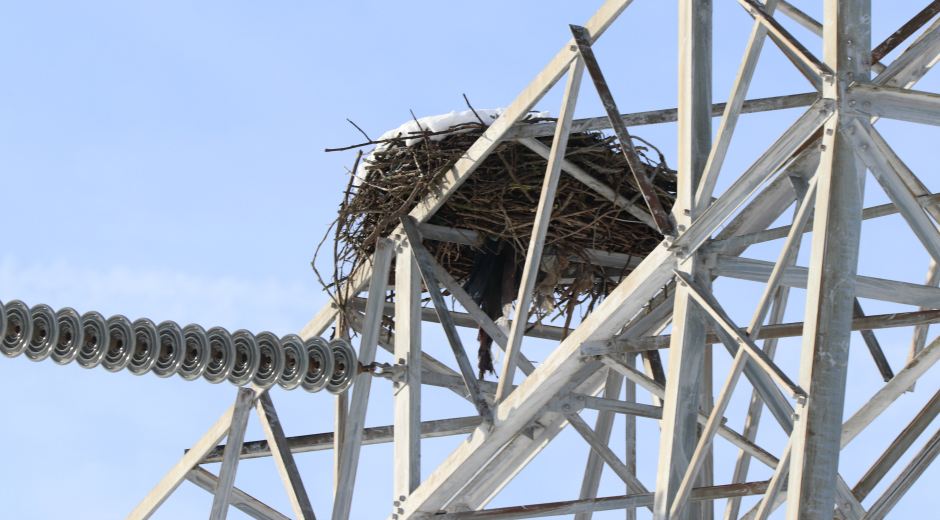Met-Ed Partners with Wildlife Officials to Remove Protected Bird Nest from Substation
With the anticipated return of ospreys to the area in the coming weeks, Met-Ed utility personnel partnered with its environmental staff and wildlife officials to proactively remove a large, unoccupied osprey nest from a substation in Upper Mount Bethel Township.
Birds of prey like ospreys and eagles often seek out tall structures, including electrical substations and utility poles to build their nests, which can measure up to three feet in width. These nesting habits often place the birds near energized electrical equipment – jeopardizing their well-being and potentially causing power outages.

“Ospreys typically arrive in Pennsylvania in late March and return to the same nesting sites from the year before,” said Amy Ruszala, an environmental scientist and avian expert at Met-Ed’s parent company, FirstEnergy Corp. “That’s why it was important for us to take advantage of their absence in the winter and remove unoccupied nests that are situated on our equipment.”
The nest was originally believed to belong to a bald eagle because the birds had been recently perching and hanging around the nest. Because of the tight environmental regulations pertaining to nest removals, the company consulted with the U.S. Fish and Wildlife Service to conduct a 10-day survey of the nest. Their findings were consistent with those of FirstEnergy – the nest was inactive and belonged to an osprey.
“Had the nest truly been an eagle nest, the pair would likely have begun using it with the start of the current breeding season, since the osprey were presumably absent,” said Ruszala.
Met-Ed utility personnel also teamed up with the Pennsylvania Game Commission and Northampton County Parks & Recreation Division to install an osprey nesting platform on top of a 60-ft. pole at Totts Gap Conservation Area in Upper Mount Bethel Township. This structure will help prevent electrical service disruptions by discouraging the birds from nesting on poles with energized equipment.
While the birds were south for the winter, utility personnel from Met-Ed's sister company, Penn Power, also worked closely with FirstEnergy’s environmentalists to install single fiberglass crossarms on utility poles that had nesting issues due to the wooden, double crossarms. Ospreys are a month away from their peak breeding season and will lay their eggs between April and July.
MEDIA CONTACT: Lauren Siburkis, (330) 203-8850




